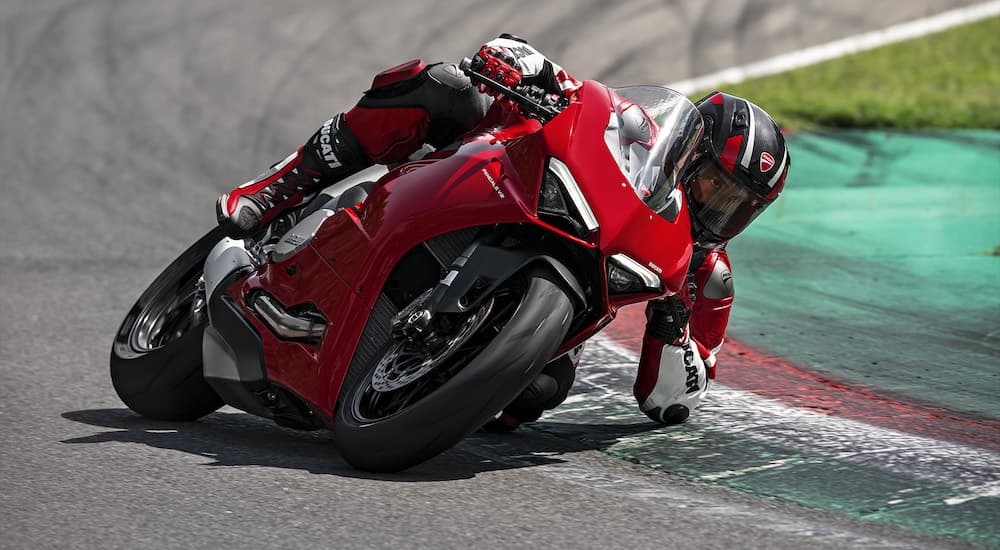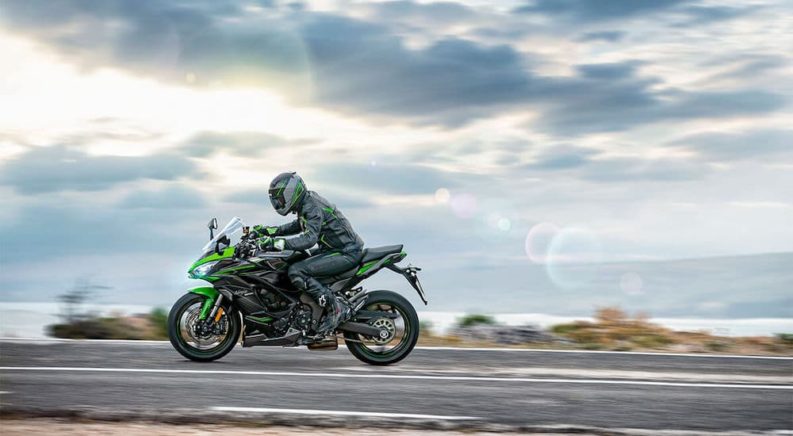I don’t care what kind of vehicle you have: proper maintenance is the most important thing you can do to get the most from your ride. This is doubly true if you’ve got a motorcycle, however, since there are far fewer layers of stuff between you and the moving parts of your vehicle. It’s easy for someone in a full-size SUV to feel pretty removed from their engine and suspension––but when you’re sitting on all that and feeling every little vibration and change in performance, things are a lot more tactile for you.
Proper motorcycle maintenance is relatively simple (some things are more complicated than others) and incredibly rewarding. Owning and riding a motorcycle is often far more intimate than driving a hatchback or an SUV––you’re directly connected to everything going on with your ride. There’s nothing like working on your own vehicle and knowing every last inch of it to keep it running beautifully, but it’s important to remember some basics and keep a lot of routine and common repairs in mind.
Learn to Pre-Trip
A “pre-trip” or “pre-trip inspection” is a term that truckers use to refer to a brief inspection they perform on their rig before they hit the road. This is required by federal law and, over time, becomes a part of their daily routine every time they get into their truck. While you don’t necessarily have to become quite this rigid with it, learning to do a pre-trip before you hop on your bike is a great habit to build.
If you haven’t taken your motorcycle out in a while, then you should definitely perform a pre-trip inspection on it. On the other hand, if you’re a daily rider, then this is something you might do once each day or perhaps every few days just to be safe. You don’t have to do a thorough inspection of every part of your motorcycle, but there are some key areas to check.

Remember the TCLOCK Checklist
TCLOCK is a simple acronym that you can use as a way to remember each of the major areas that you should check during a pre-trip inspection. You can be as thorough as you’d like, but by giving each of these areas at least a cursory glance, you’ll have a better chance of finding any issues. A TCLOCK check includes the following:
- Tires & Wheels: Always check the tires on your motorcycle to ensure the tread depth is good, they’re not too worn, and they have enough air in them. You should inspect the wheels to see that no spokes are loose or damaged and that the rims aren’t bent or cracked; also, give them a few spins to make sure they aren’t loose.
- Controls: This includes a number of different elements that keep you in control of your motorcycle. Check the levers to see they’re not bent or damaged and move easily. Look at all the cables to see they’re not frayed or damaged, and check hoses for any breaks or leaks. You should also make sure the throttle moves easily and properly.
- Lights & Power: Make sure your turn signals and brake lights work, and your headlight is bright and properly aligned. Check your battery to see that the terminals are clean and it looks good overall.
- Oil & Fluids: Check your engine oil and add more, if needed, along with your transmission fluid, coolant, and any other fluids.
- Chassis & Chain: Move the handlebars to ensure that steering is easy, check your brakes, and feel the suspension. You should also check the tension of your belt or chain, lubricating as needed, and check for any loose nuts, bolts, or other fasteners.
- Kickstand: Finally, make sure your kickstand is working properly and is easy to use to keep your motorcycle standing securely.
I know that’s a lot to inspect, but once you get in the habit of it, you’ll be able to quickly and easily check all of these areas. It should only take 10 minutes or so, which is far better than having a tire disintegrate while you’re on the highway or having your chain come loose. If you haven’t used your motorcycle in a while, then be very thorough with all this and take your time.
Common and Simple Repairs
As far as simple repairs, there are plenty of things that you can do on your motorcycle with basic tools. Doing this yourself can save you some money and feels incredibly rewarding. It also means you’re ready if something goes wrong while you’re on the road. If you don’t have a small travel tool pack, get one, and get to know your bike. Some simple repairs you can do:
- Change your oil: Remove your oil filler cap, undo the sump bolt on your engine, and drain your old oil into a pan. Remove and replace the oil filter––you might need a specific wrench for this––then replace the sump plug, tighten it with a torque wrench, and fill the bike with fresh oil.
- Change your tires: Once your tread depth is too low, or if your tires are damaged, it’s time to replace them. Removing a tire is fairly easy to do at home if you have a stand, which can be simpler than taking your whole bike in for a new tire.
- Adjust the chain: A loose chain will negatively impact your motorcycle’s performance and cause bigger problems if left unfixed. Simply follow the manual and adjust the tension in the chain to meet your manufacturer’s specs. Use a torque wrench as you replace bolts, so they meet the standards in your manual; finally, lube the chain so it moves easily and you’re all set.
- Replace brake pads: This is a bit more complicated than some other stuff, but it’s vital, and you can do it if you take your time. Make sure you get the proper replacement parts for your ride based on your owner’s manual or other information from the manufacturer. Depending on your model, you might have to remove the calipers before you can replace the pads, so make sure you have the factory manual for your motorcycle and follow the instructions there precisely.
- Care for your battery: When you check your battery during a pre-trip inspection, make sure you clean off the terminals if there’s any buildup on them and check the electrolyte level in the battery. Just be careful when messing with your battery, as the acid from it can cause serious injury to your skin and eyes.
- Check your coolant: Follow instructions in your motorcycle’s manual to find and check the coolant levels. If your coolant looks rough, drain it and replace it with fresh coolant to keep your engine running beautifully.
- Replace spark plugs: Remove your spark plugs, one at a time, and inspect them to see if they look good. If any are in rough shape, replace them with the proper type of plug based on your motorcycle. Just remember to get them secure but don’t over-tighten them.

Get the Best Experience Every Time You Hit the Road
This is just a sample of the kinds of things you can easily do at home to keep your motorcycle running beautifully. Most of this just requires a few tools––a torque wrench will be your best friend through a lot of it so you can tighten bolts and other parts to the level specified by the manufacturer. The manual for your ride will have a lot of the information you need, and there are maintenance manuals you can get to teach you more; you might also consider taking a motorcycle maintenance class in your area. Taking proper care of your ride is fun, rewarding, and ensures you get the best experience every time you hit the road.

